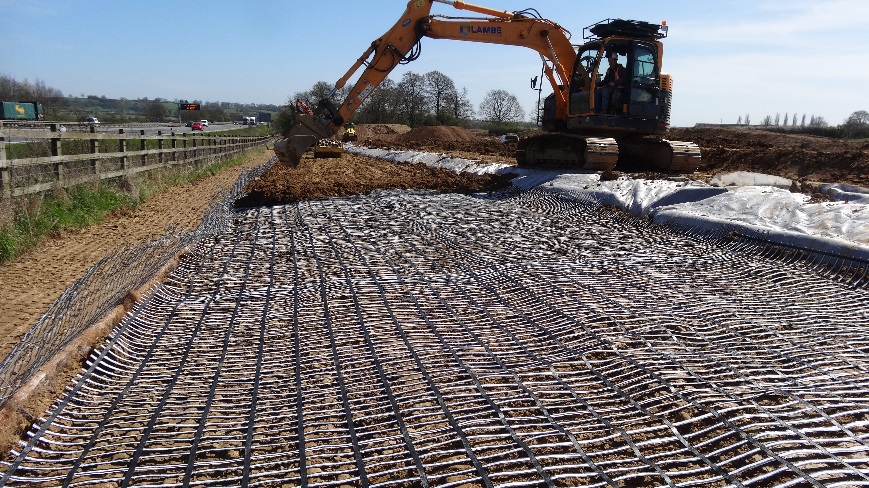Re-using poor marginal soil within geosynthetics reinforced slopes and walls
Nico Brusa, Maccaferri, suggests current design guidelines are very strict on the range of fill materials that can be used in reinforced soil slopes and structures which limits innovation in engineered slope design. He asks should this be the one of the areas where CIRIA could focus future research.
The use of marginal fills on construction sites can yield significant cost and environmental savings on a project. In the UK material leaving a construction site is considered waste and must be disposed of accordingly. This is expensive as waste and it is subject to landfill taxes in addition to the cost of excavation and transportation of the soil. Furthermore, there are the pollution and congestion considerations associated with the transportation of the waste material and the import of other construction materials to the site. Thus, there are significant benefits in re-using this material, once considered unsuitable, in site works.
Low-permeability marginal fills can be used to construct reinforced slopes and walls, provided that adequate drainage is provided within the reinforced fill. Without adequate drainage, excess pore water pressures would typically build up in the fill during construction. Pore water pressures reduce the internal shearing resistance of the fill, and reduce the interface shear strength between the reinforcement and the fill.
Research has shown that geotechnical engineers and the construction industry in general like to think of themselves as working to benefit the environment and providing for future generations in tandem, if not always in harmony, with nature. However, engineers still prefer to work with high quality and expensive imported granular fill, rather than seriously consider using recycled spoil generated as part of construction activities.
Innovative geocomposites which combine functions such as drainage and reinforcement are becoming available in the market, but there is no guidance on how to select a suitable solution. Accordingly, potential opportunities to reduce waste and become more efficient are being wasted, yet it is possible design and construct sustainable and environmentally friendly slopes and walls.
Currently specialist knowledge is required to design these solutions and realise these benefits. Between 2015 and 2017 several reinforced soil structures were constructed in the UK using unique and innovative draining geogrids and marginal fills. Reinforced structures and road embankments using the draining geogrid and marginal fills were designed using BS 8006-1 (2010) for internal stability, EN 1997 (2004) for global stability and the method presented by Giroud et al. (2014) for dissipation of excess pore pressures in the marginal fill.
Current design guidelines are very strict on the range of fill materials that can be used in reinforced soil slopes and structures which limits innovation in engineered slope design.
Should this be the one of the areas where CIRIA should focus research?
